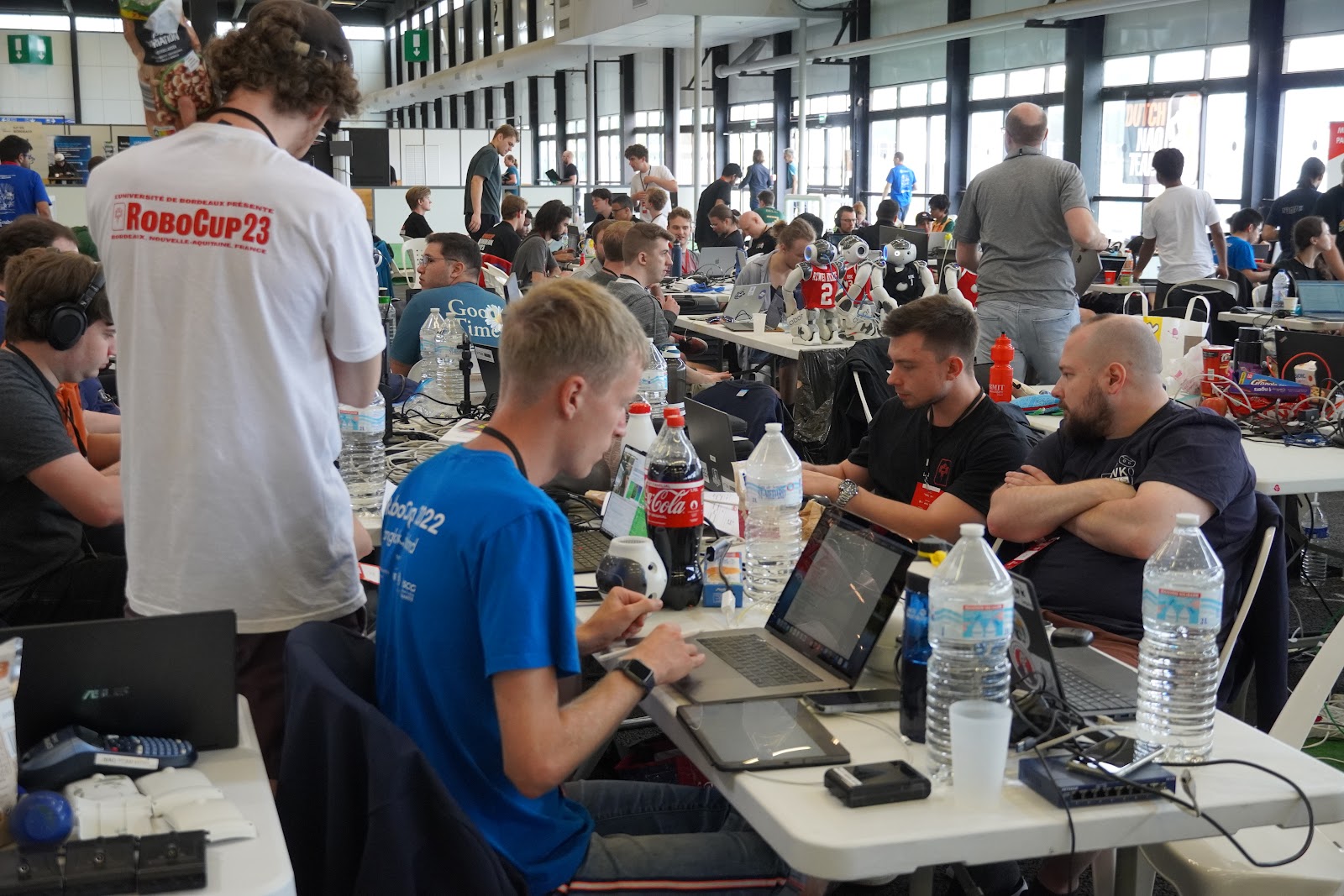A day's worth of train travelling, abandoned luggage, the subsequent terror warning and the just about baaaaaaarely avoided threat of having to stand for 2 hours from Paris to Bordeaux can't dim our sparkle:
We. Are. Back. At. RoboCup!
That's right, one year after last year's showdown in Bangkok we're back! Not necessarily with a vengeance, but with a deep commitment to climbing back to the top and a vivid memory of a spectacular run but losing the final. If that amounts to being back with a vengeance, then that might be true, I can't tell. Either way, we were certainly busy these pasts months: adding new functionalities, optimizing what we already had and even building our own training machines. Our team has also noticeably grown over the past few months and that strength is certainly coming in handy now - as per usual, we are moving heaven and hell: our schedule certainly is tight and our ambitions ever so high. Will we be able to transcend our previous success? Well, let's take a look at some of what we got:
And the league said There shall be a larger team and the teams said Okay
"This year's updated rules called for a complete overhaul of our team strategy", says Rico, our team leader: "The constantly decreasing data budget during game play isn't a new development but having to coordinate seven robots on the field is certainly more than just a incremental adjustment". With fourteen robots on the field there is bound to be some rough play - something we're well acquainted with. Running dynamic maneuvers, making interdependent decisions within the team - a sizable project but indispensable for a successful tournament. We can be sure our competitors won't just be skipping this part. But with our reaction times shortened and our communication channels streamlined, we are now more efficient than ever.
Resurrection of an old friend
Another major improvement takes us back to our roots: something as seemingly simple as walking remains an integral part of a successful RoboCup campaign. Sleep on improving your stability and speed and you’ll wake up on the ground – struggling to get up, struggling to pay for repairs. Hence, optimization on this end has to be done with special attention to robot safety. We built a special contraption to aid us in this, long time followers might remember it’s spiritual predecessor.
Tobias, who worked on the walking optimization and designed it in a way so that it can be operated remotely explains how we approached the project: “We’re using a black box optimizer, building on substantial advances in research of the past years. Our System tests out various parameter sets and we’re sending back feedback on how successful this attempt was. In this way, our program learns interdependencies and explores the parameter space.” Thomas, who designed the first ever walking algorithm for our team, adds: “We’re mainly focused on stability here. Speed is another option, but it’s always a trade-off”.
Right now, we’re on day 2 of preparation and test games are being played all around us before the actual RoboCup starts tomorrow. Stay tuned!

No comments:
Post a Comment